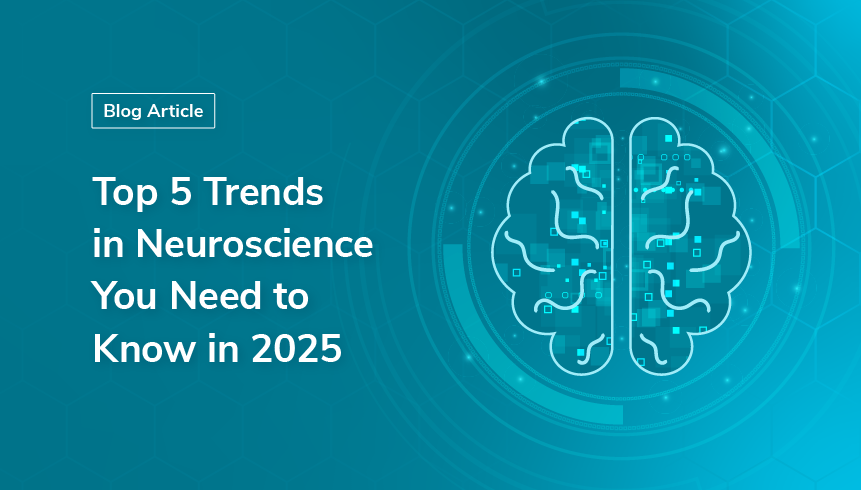1. Neuroplasticity & Brain Health
Neuroplasticity - the brain’s ability to rewire itself - continues to redefine how we approach brain health. While aging has long been associated with cognitive decline, advances in neuroplasticity-focused strategies are showing that staying young in mind may be more achievable than ever before. If various social media, shopping and gaming apps are rewiring our reward centers and altering our attention spans for the worse, brain training apps may well achieve the opposite. Once seen as novelty tools, apps like Lumosity are evolving into sophisticated platforms that strengthen memory, attention, and cognitive flexibility. Paired with personalized cognitive profiles, they can help people of all ages maintain sharper minds. Meanwhile, advances in understanding the mechanisms of memory consolidation are being directly translated to medicine and technology. Techniques like non-invasive brain stimulation, behavioural interventions and even pharmacological support, the latter mostly in animal studies, are being investigated to help strengthen memories, offering potential therapies for neurodegenerative diseases or disorders such as drug addiction. This convergence of technology, healthcare, and neuroscience highlights a future where maintaining brain health and cognitive vitality is an accessible reality.
2. Evolving MRI Machines
Bigger and better or smaller and smarter? This is the tug-of-war between engineers pursuing more powerful forms of MRI technology.
Since the first rollout of a 7 Tesla Siemens MRI scanner, we’ve seen these machines used not only more widely in neuroscience research, but also in clinics. Neuroscientists are now looking eagerly ahead to the moment that stronger magnets, far surpassing 1.5T, 3T and even 7T machines in strength, become the default. 2024 saw the fruit of more than 20 years of R&D with the first anatomical brain images from the Iseult MRI machine, coming in at a whopping 11.7T. Remarkably, an in-plane resolution of 0.2mm and 1mm slice thickness required only 4 minutes of acquisition time. In the same month, the University of Nottingham in the UK announced their collaboration with Tesla Engineering and Philips to build an 11.7T magnet in the heart of their Sir Peter Mansfield Imaging Centre. And plans elsewhere for more powerful scanners, with strengths as high as 14T, are already underway. Expanded access to such ultra-high field resolutions will provide unprecedented looks into our brains.
On the other hand, as the demand for routine clinical MRI scans rises, companies have explored the development of smaller, more portable, and cost-effective alternatives. Companies such as Hyperfine or PhysioMRI have not only made their systems portable, but by reducing the magnetic field strength they are cheaper to produce and provide more comfort for the patient.
Even larger MRI machines are transitioning towards portability. In late 2023, Philips unveiled an industry-first mobile 1.5T MRI unit, distinguished by its lightweight design and the promise of lower costs thanks to its helium-free operations. And at RSNA 2024, attendees were invited to glimpse XGY’s ‘rotating scanner’, fitted with a rotating gantry and ability to adjust its orientation around the patient, thought for weight-bearing or spinal MRI.
3. Scaling Up Digital Brain Models
2025 will continue the decades-long trend for the pursuit of complete and accurate digital brain models. These digital representations of the brain vary in complexity and scope. At one end of the spectrum are personalized brain models, where general brain simulations are enhanced with individual-specific data. An example is the Virtual Epileptic Patient, wherein neuroimaging data inform in silico simulations of an epileptic patient’s brain. Taking this concept further are digital twins - continuously evolving models that update with real-world data from a person over time. These dynamic models are already being used to address specific research questions, such as predicting the progression of neurological diseases or testing responses to therapies. At the most ambitious end of the spectrum, researchers are exploring the creation of full brain replicas - comprehensive and highly detailed digital versions of the brain that aim to capture every aspect of its structure and function. These efforts, the main focus of a 2024 position paper outlining a roadmap for digital neuroscience, underscore the growing potential of brain modeling to revolutionize neuroscience, and personalized medicine over the coming decade
4. AI in the Neuroradiology Clinic
“Try submitting x-ray, PET, MRI or other medical images to Grok for analysis. This is still early stage, but it is already quite accurate and will become extremely good. Let us know where Grok gets it right or needs work.”
For context, Grok is X’s AI chatbot, and this was a post put out by Elon Musk in October 2024. It turned out to be an ingenious move that saw users submitting their personal data in droves, amounting essentially to ‘free data’ unbound by the detailed agreements that tech companies usually are when seeking medical data, but which for that same reason had medical privacy experts squirming.
While the use of AI has exploded over the past few years, we are yet to see the extent of its impact in healthcare. This is mainly due to the lack of digitalization of healthcare systems and clinical processes, but also because a singular AI tool or biomarker is difficult to integrate into an existing ecosystem. However, as the strain on healthcare systems grows ever greater, AI tools are needed to alleviate some of the more mundane workloads. This is where Musk’s intentions hold merit. For example, Accenture forecasts that up to 40% of working hours could be positively impacted by large language models, supporting workers with administrative tasks, decision making, and even personalized care. Other uses for AI extend tothe segmentation of tumors in brain MRI scans or tissue types in CT scans, done by the thousands every day. Empowering neuroradiologists with the automation of these processes enables them to direct their focus more exclusively towards patient care. 2025 will see a greater push to validate AI tools in what stands as the final hurdle toward integrating them within the clinic.
5. A Question of Neuroethics
If Musk’s appeal for medical data raised important ethical questions, advancements across the field of neuroscience more generally are opening a can of ‘neuroethical’ worms that will come to the forefront in coming years. One area of concern is neuroenhancement - the use of brain-computer interfaces and other tools to improve cognitive functions. Unlocking the brain’s full potential is a tantalizing prospect, but it brings forth complex questions about fairness and accessibility. In addition, should these technologies develop the ability to ‘read minds’, they could be encroaching on the most private aspects of our inner lives - emotions, desires, and memories - perhaps before we ourselves are even aware of them. The potential for misuse underscores the need for strict guidelines and regulatory oversight.
The development of brain models like digital twins further complicates the ethical landscape. Digital twins are continuously updated with real-world data. Though efforts to de-identify brain data are ongoing, there remains a risk that individuals, particularly those with rare diseases, may become identifiable over time. Ensuring that patients are informed of these risks is critical for maintaining trust and safeguarding privacy.
As we navigate these developments, neuroscientific research should be driven by curiosity and a commitment to promoting society’s best interests. Long-term societal considerations, such as ensuring AI and neurotechnologies are representative, inclusive, and free from bias, are vital to preventing inequity. Addressing these neuroethical challenges sooner than later will help us balance innovation with the preservation of individual rights and societal values.

Further reading:
